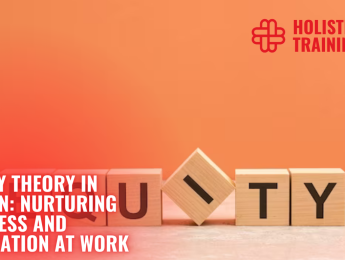- Table of Contents
- Unravelling Employee Benefits Administration
- A Historical Odyssey: Evolution of Benefits Administration
- The Crucial Role of Benefits Administration & Management
- Employee Morale and Engagement
- Attracting Top Talent
- Employee Retention and Reduced Turnover Costs
- Health and Wellness
- Positive Workplace Culture
- Financial Security and Retirement Planning
- Competitive Advantage
- Flexibility and Inclusion
- Employee Empowerment and Ownership
- The Outsourcing Conundrum: To Outsource or Not to Outsource
- Steps to Excelling in Benefits Administration
- 1. Comprehensive Strategy Development
- 2. Transparent Communication
- 3. Streamlined Enrollment Processes
- 4. Legal Compliance
- 5. Data-Driven Insights
- 6. Personalisation and Flexibility
- 7. Continuous Education
- Challenges in Employee Benefits Administration and Management
- Rising Healthcare Costs
- Compliance Complexity
- Employee Education and Communication
- Technological Integration
- Changing Workforce Dynamics
- Balancing Personalisation and Standardisation
- Measuring ROI on Benefits Investments
- Employee Well-being and Mental Health
- Globalisation and Diverse Workforce
- Maintaining a Competitive Edge
- In Conclusion
The world of human resources is a complex and multifaceted realm that plays a pivotal role in shaping an organisation's success. Among the many critical functions that HR encompasses, employee benefits administration and management stand tall as key pillars that not only enhance employee well-being but also contribute to the overall efficiency and competitiveness of a company. In this comprehensive exploration, we will delve into the nuanced landscape of employee benefits administration, tracing its historical evolution, understanding its significance, contemplating the outsourcing dilemma, and uncovering actionable steps to master the art of benefits administration.
Unravelling Employee Benefits Administration
At its core, employee benefits administration refers to the systematic process of designing, implementing, and overseeing various perks, incentives, and support systems that organisations offer to their employees beyond their regular salary. These benefits go beyond financial compensation, encapsulating healthcare coverage, retirement plans, paid time off, wellness programmes, educational assistance, and more. The administration of these benefits requires meticulous planning, effective communication, regulatory compliance, and ongoing evaluation to ensure their alignment with both employee needs and organisational goals.
A Historical Odyssey: Evolution of Benefits Administration
The history of benefits administration is an intriguing journey that reflects the ever-evolving nature of work and the changing dynamics of employee-employer relationships. The roots of modern benefits administration can be traced back to the early 20th century, with the advent of employee pension plans. As industrialisation gained momentum, employers recognised the need to offer more than just wages to attract and retain a skilled workforce. This led to the establishment of pension funds and rudimentary healthcare programmes.
The subsequent decades witnessed a gradual expansion of benefits offerings, including the introduction of group health insurance in the mid-20th century and the emergence of retirement savings plans like the 401(k). The technological revolution of the late 20th century further transformed benefits administration, paving the way for automated enrollment systems and digital platforms that streamlined processes and improved accessibility. Today, benefits administration has evolved into a strategic endeavour that directly impacts employee satisfaction, engagement, and retention.
The Crucial Role of Benefits Administration & Management
Benefits administration isn't just a checkbox on an HR to-do list; it's a fundamental aspect that reverberates throughout an organisation, influencing its culture, employee satisfaction, and bottom line. Let's delve deeper into the multifaceted role that benefits administration and management play in shaping a thriving workforce and a successful organisation.
Employee Morale and Engagement
A well-structured benefits programme can work wonders in boosting employee morale and engagement. When employees perceive that their employer cares about their well-being, they're more likely to feel valued and invested in the company's success. Comprehensive benefits not only enhance the quality of employees' lives but also show them that their contributions are recognised and rewarded beyond their salary. This, in turn, creates a sense of loyalty and commitment that drives increased effort, productivity, and overalljob satisfaction. In fact,statistics show that a 70% increase in employee loyalty is observed when their contentment with benefits is fulfilled by their employer.
Attracting Top Talent
In an increasingly competitive job market, where top talent is a precious commodity, a strong benefits package can be a decisive factor for candidates choosing between potential employers. Organisations that offer a range of benefits that cater to different aspects of an employee's life – from health and wellness to professional growth and financial security – stand a better chance of attracting the cream of the crop. It's not just about the quantity of benefits but also the thoughtfulness and relevance of the offerings in relation to the needs of the target talent pool.
Employee Retention and Reduced Turnover Costs
High employee turnover can be a significant drain on resources, both in terms of time and money. Employees who are satisfied with their benefits are more likely to stay with the company for the long haul. A comprehensive benefits package not only retains employees but also saves the organisation money that would otherwise be spent on recruiting, training, and onboarding new hires. Over time, this can lead to substantial cost savings that contribute directly to the company's profitability.
Health and Wellness
Employee well-being is paramount, and benefits administration plays a pivotal role in ensuring that employees have access to health and wellness resources. Comprehensive healthcare plans, wellness programmes, and mental health support can lead to healthier employees, reduced absenteeism, and increased overall productivity. By prioritising employee health, organisations can create a positive cycle where healthier employees are happier, more engaged, and contribute effectively to the company's success.
Positive Workplace Culture
A well-designed benefits programme aligns with the organisation's values and contributes to a positive workplace culture. When employees feel that the company genuinely cares about their needs and priorities, it fosters a sense of community and shared purpose. This, in turn, enhances teamwork, collaboration, and a positive atmosphere where employees are motivated to go above and beyond their regular duties.
Financial Security and Retirement Planning
Benefits administration goes beyond immediate perks; it also plays a critical role in helping employees secure their financial future. Retirement plans like 401(k)s and pension programmes offer employees a sense of security, allowing them to plan for life after their active working years. A robust retirement plan not only benefits employees individually but also supports the organisation by ensuring a stable and experienced workforce over time.
Competitive Advantage
In a globalised economy, where businesses compete on various fronts, a well-structured benefits programme can provide a competitive edge. Organisations that are known for taking care of their employees are more likely to attract positive attention from customers, partners, and investors. A strong benefits package can become an integral part of a company's brand identity and contribute to its reputation as an employer of choice.
Flexibility and Inclusion
A dynamic benefits programme considers the diverse needs of the workforce. Offering a range of benefits that accommodate various life stages, family structures, and personal preferences demonstrates a commitment to inclusion and diversity. When employees feel that their unique situations are considered, it enhances their sense of belonging and contributes to a harmonious work environment.
Employee Empowerment and Ownership
Effective benefits administration doesn't just entail providing benefits; it also involves educating employees about their options and empowering them to make informed decisions. By equipping employees with the knowledge they need to navigate their benefits, organisations promote a culture of ownership and responsibility. This empowerment extends beyond benefits to other aspects of their professional lives, fostering a sense of autonomy and accountability.
The Outsourcing Conundrum: To Outsource or Not to Outsource
As organisations grapple with the complexities of benefits administration, a critical decision often emerges: whether to handle benefits administration in-house or outsource it to a specialised provider. The choice depends on various factors, including the organisation's size, resources, expertise, and strategic goals.
Table 1: Comparative Analysis of In-House Benefits Administration & Outsourcing Benefits Administration
Aspect | In-House Benefits Administration | Outsourcing Benefits Administration |
Expertise and Specialisation | Internal teams, familiar with company culture | External specialists with broad industry expertise |
Cost Control and Flexibility | Direct control but potential higher initial costs | Outsourced, potential for cost savings and flexibility |
Compliance Management | Internal oversight, dedicated compliance team | Outsourced, specialised providers ensure regulatory adherence |
Employee Engagement and Communication | Direct communication, potential for better employee engagement | Outsourced providers with established communication channels |
Scalability and Adaptability | May require additional resources for scalability | Outsourced, scalable solutions to adapt to changing needs |
Outsourcing benefits administration can provide several advantages, such as access to specialised knowledge and technology, reduced administrative burden on HR teams, and compliance with complex regulations. Outsourcing can also ensure a consistent and smooth benefits experience for employees, thanks to the expertise of dedicated professionals who focus solely on benefits management. However, it's essential to strike a balance between outsourcing and maintaining internal oversight to ensure that the organisation's unique needs and culture are adequately represented.
Steps to Excelling in Benefits Administration
Navigating the intricate landscape of benefits administration requires more than just procedural knowledge; it demands a strategic mindset, effective communication, and a commitment to ongoing improvement. Let's dive into the comprehensive steps that organisations can take to excel in benefits administration and create a harmonious, thriving workplace.
1. Comprehensive Strategy Development
A successful benefits programme begins with a well-defined strategy that aligns with the organisation's overarching goals and values. This strategy should be crafted by considering both the company's immediate and long-term objectives. Start by analysing the demographics of your workforce – their ages, backgrounds, and needs – to tailor benefits that resonate with them. Simultaneously, benchmark your offerings against industry peers to ensure competitiveness. A carefully crafted benefits strategy not only reflects the organisation's commitment to employee well-being but also helps attract and retain top talent.
2. Transparent Communication
Communication is the cornerstone of effective benefits administration. When employees understand the benefits available to them, they're more likely to make informed decisions and utilise the resources offered. Transparent communication involves not only providing information during the initial enrollment period but also delivering updates, policy changes, and educational resources throughout the year. Utilise a variety of communication channels, including emails, webinars, intranet portals, and physical materials, to ensure that employees are well-informed about their benefits options.
3. Streamlined Enrollment Processes
Gone are the days of paper-based enrollment forms and complex administrative procedures. Embrace technology to simplify the enrollment process and enhance the employee experience. Implement user-friendly digital platforms that allow employees to enrol in benefits, make changes, and access relevant information with ease. These platforms should be intuitive and accessible across devices, ensuring that even technologically challenged employees can navigate them effortlessly. A streamlined enrollment process minimises errors, reduces administrative burden, and enhances employee satisfaction.
4. Legal Compliance
Navigating the legal and regulatory landscape of benefits administration is a continuous challenge. Laws and regulations related to employee benefits are subject to change, and non-compliance can result in severe consequences. Establish a dedicated team or work with legal experts to ensure that your benefits programmes adhere to the latest labour laws, healthcare regulations, and tax requirements. Regularly review and update policies to align with evolving legal standards, thereby mitigating the risk of costly penalties and legal disputes.
5. Data-Driven Insights
Leveraging data analytics can provide valuable insights into the effectiveness of your benefits programmes. Monitor metrics such as participation rates, utilisation of specific benefits, and employee feedback to identify trends and areas for improvement. For instance, if a certain benefit is consistently underutilised, consider whether it's due to lack of awareness, relevance, or communication. By analysing data, you can fine-tune your benefits offerings to better suit the needs and preferences of your employees.
6. Personalisation and Flexibility
Recognise that your workforce comprises individuals with diverse needs and priorities. Offering a degree of personalisation within your benefits framework allows employees to tailor their selections based on their unique circumstances. Flexibility extends beyond the initial enrollment – consider life events like marriage, childbirth, or moving, which might necessitate adjustments to benefits. A flexible approach demonstrates a commitment to employees' well-being and supports them during different phases of their lives.
7. Continuous Education
Benefits programmes evolve over time, and so should the knowledge of both employees and HR teams. Invest in ongoing education and training sessions that keep everyone informed about changes to benefits, new offerings, and best practices. Regular workshops and informational sessions can empower employees to make informed decisions about their benefits and help HR teams stay up-to-date with the latest trends and regulations.
In essence, mastering the art of benefits administration is a dynamic process that requires a blend of strategic thinking, technological proficiency, and a genuine commitment to employee well-being. By aligning benefits with organisational goals, promoting transparent communication, leveraging technology, staying compliant, analysing data, embracing personalisation, and prioritising ongoing education, organisations can cultivate a benefits administration strategy that not only meets but exceeds the needs of their employees. In doing so, they create an environment where employees are empowered, engaged, and inspired to contribute their best to the company's success.
Challenges in Employee Benefits Administration and Management
While the world of employee benefits administration brings numerous advantages to both employees and organisations, it is not without its share of challenges. Navigating these obstacles is crucial for HR professionals and decision-makers striving to create a seamless and effective benefits strategy. Let’s explore the key challenges faced in employee benefits administration and talk about ways to overcome them:
Rising Healthcare Costs
One of the most persistent challenges is the escalating costs of healthcare. As medical expenses continue to rise, organisations find it challenging to provide comprehensive health benefits without significantly impacting their budget. Striking a balance between offering quality healthcare coverage and managing costs requires strategic planning and continuous evaluation of healthcare providers and plans.
Compliance Complexity
The regulatory landscape governing employee benefits is intricate and subject to frequent changes. Navigating through various laws, such as theAffordable Care Act (ACA),ERISA, and FMLA, demands constant vigilance. Failure to stay compliant can result in severe penalties. Establishing a dedicated team or partnering with legal experts is essential to ensure that benefits programs align with evolving legal standards.
Employee Education and Communication
Transparent communication is crucial, but it's often a challenge to ensure that employees fully comprehend the intricacies of their benefits. Misunderstandings about coverage, eligibility, or enrollment procedures can lead to dissatisfaction and underutilisation of benefits. Organisations must invest in ongoing education programs, utilising various communication channels to keep employees informed and engaged.
Technological Integration
The shift towards digital platforms for benefits administration brings its own set of challenges. Integrating new technologies seamlessly into existing systems, ensuring data security, and providing user-friendly interfaces can be complex. Organisations need to invest in robust, adaptable technology solutions and offer training to ensure both HR professionals and employees can navigate these systems efficiently.
Changing Workforce Dynamics
With the rise of remote work, gig economy jobs, and diverse work arrangements, catering to the evolving needs of a dynamic workforce presents a challenge. Benefits programs must be flexible enough to accommodate different employee demographics, including part-time workers, freelancers, and those with unique lifestyle requirements.
Balancing Personalisation and Standardisation
While personalisation is crucial for meeting individual employee needs, striking a balance between personalisation and standardisation can be challenging. Offering a broad range of benefits to cater to diverse preferences while maintaining a degree of standardisation is necessary. This challenge requires a deep understanding of the workforce and the ability to tailor benefits packages accordingly.
Measuring ROI on Benefits Investments
Quantifying the return on investment (ROI) for employee benefits can be elusive. While benefits contribute to employee satisfaction and engagement, connecting these factors directly to the organisation's bottom line is challenging. Implementing effective measurement metrics, such as employee retention rates, productivity metrics, and periodic employee surveys, can help gauge the impact of benefits programs.
Employee Well-being and Mental Health
As awareness of mental health issues grows, addressing the mental well-being of employees becomes crucial. Crafting benefits packages that encompass mental health support and wellness programs is essential. However, stigma, varying levels of awareness, and the need for privacy can make it challenging to encourage employees to utilise these resources effectively.
Globalisation and Diverse Workforce
For multinational corporations, managing benefits across different regions and for a diverse workforce adds complexity. Varying legal requirements, cultural differences, and disparities in healthcare systems necessitate a nuanced approach to benefits administration. Coordination and customisation are vital to ensure all employees receive equitable and meaningful benefits.
Maintaining a Competitive Edge
In a competitive job market, staying ahead in offering attractive benefits becomes a perpetual challenge. Regular benchmarking against industry peers, adapting to emerging trends, and staying attuned to employee preferences are essential to maintain a benefits package that stands out and attracts top talent.
Addressing these challenges requires a proactive and adaptive approach. Organisations that successfully navigate these hurdles not only enhance their employees' well-being but also contribute to a positive workplace culture and sustained organisational success. Overcoming these challenges is a continuous process, demanding a commitment to staying informed, embracing innovation, and refining benefits strategies to meet the evolving needs of the workforce.
In Conclusion
Employee benefits administration and management are at the heart of creating a holistic and supportive work environment that fosters both individual well-being and organisational success. This intricate process, enriched by its historical evolution and contemporary strategic nuances, requires dedication, expertise, and a commitment to ongoing improvement. Whether handled in-house or entrusted to external experts, benefits administration is a dynamic journey that reflects an organisation's values and shapes its future. By embracing the challenges and opportunities it presents, companies can navigate the path to excellence and stand as beacons of employee-centric success.
As you embark on your journey to excel in employee benefits administration and management, make sure to take it a step further with our course: ‘Effective Management of Employee Benefits, Compensation & Rewards.’ This course is meticulously designed to equip you with practical insights, strategies, and best practices that will empower you to navigate the complexities of benefits administration with confidence. By enrolling in this course, you'll gain the tools to create a benefits programme that not only enhances employee satisfaction but also propels your organisation towards sustained success. Elevate your expertise today and enrol in our course to unlock the full potential of benefits administration.
























